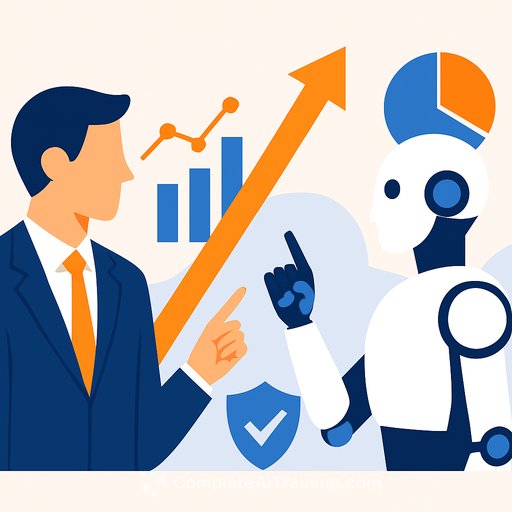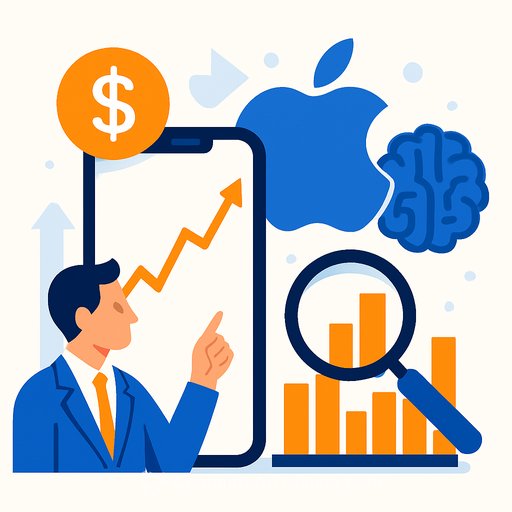How Microsoft's AI Strategy Is Driving Growth
"Thinking in decades, executing in quarters." That's the operating system Satya Nadella set in Microsoft's 2025 shareholder letter - long horizon, short feedback loops.
The bet is simple: treat AI as the new platform shift, then align the business, the stack, and the culture to compound against it.
The results so far
Microsoft reported US$281.7bn in revenue, up 15%. Azure crossed US$75bn, up 34%. The takeaway for executives: customers are consolidating on integrated ecosystems that offer AI, data, and security in one place.
The foundation: security and quality first
Microsoft's first two priorities are security and quality. The Secure Future Initiative and Quality Excellence Initiative mobilise thousands of engineers to harden infrastructure, improve threat detection, and raise resiliency.
As Nadella puts it: "These initiatives are laying the foundation for a renaissance of our engineering culture where we build planet-scale systems that power the world with the security and quality they require."
For leaders, this is the signal: AI growth rests on dependable systems. Cut corners here and everything else leaks value.
The platform: scaled AI infrastructure
Microsoft now runs 400+ data centres across 70 regions. The newly opened Fairwater site is billed as "the world's most powerful AI data centre." The company is also investing in Microsoft Fabric and quantum computing to tighten the link between cloud, data, and AI.
Through Azure AI Foundry, enterprises can access 11,000+ models from multiple partners - a practical way to standardise experimentation while keeping options open.
Want the source context? See Microsoft's investor materials for ongoing updates: Investor Relations. Security program details are also public: Secure Future Initiative.
The product layer: Copilot moves from helper to operator
Copilot has 100+ million monthly active users and is embedded across Microsoft 365, GitHub, Teams, Edge, and Xbox. Agent Mode lets users assign multi-step tasks, shifting AI from passive assistant to active collaborator.
Impact is showing up in operations: U.S. healthcare providers are saving 100,000+ hours annually. In Colombia, judges are speeding up case processing. That's real cycle time back to the front lines.
Responsible growth: skills, safety, sustainability
Microsoft is committing US$4bn over five years to AI skills infrastructure and philanthropy, including training for 20 million people and partnerships with UNICEF and Code.org. The aim: broaden participation and reduce the skills bottleneck.
On the environment, Microsoft targets carbon-negative and water-positive outcomes. Renewable procurement grew from 1.8GW in 2020 to 34GW in 2024. The company has contracted nearly 20 million metric tons of carbon removal, supported clean water and sanitation for 1.5 million people, and plans to replenish 100+ million cubic metres of water globally.
Culture ties it together. Nadella: "We must be learn-it-alls willing to experiment guided by evaluations and committed to continuous improvement." That mindset scales better than any single product launch.
What executives can apply now
- Make security and quality the gatekeepers for AI rollout. No exceptions.
- Standardise on a platform approach (data + models + deployment) to cut time-to-value.
- Back the infra you'll need 12-24 months from now, not just today's workload.
- Pick clear Copilot use cases tied to hours saved, revenue per employee, or cycle time reduced.
- Create a model catalog and guardrails so teams can experiment without chaos.
- Fund skills at every layer: execs, managers, engineers, operators.
- Treat sustainability as an operating constraint, not a press release.
Metrics worth tracking
- AI-attributed revenue and margin lift by product line.
- Operational gains: hours saved, tickets resolved, cases closed, defects reduced.
- Security posture: incident rate, mean time to detect/respond, patch latency.
- Model performance: accuracy, drift, cost per inference, latency.
- Adoption: active users, task completion rate, agent-initiated workflows.
- Skills coverage: percentage of roles with AI proficiency mapped and trained.
- Sustainability: energy intensity per workload, contracted removals, water impact.
Bottom line
Microsoft's playbook blends patience with urgency: invest in the base layer, scale the platform, productize with Copilot, and reinforce it with skills and sustainability. Or in Nadella's words: "thinking in decades, executing in quarters."
If you're aligning your organisation's skills to an AI-first plan, explore practical learning paths by role and certification options: Courses by Job and Popular Certifications.
Your membership also unlocks:






